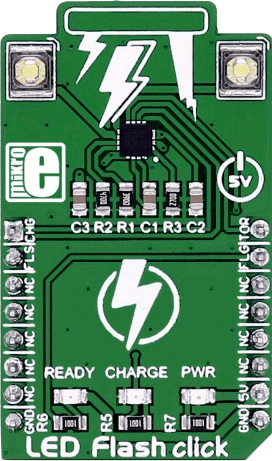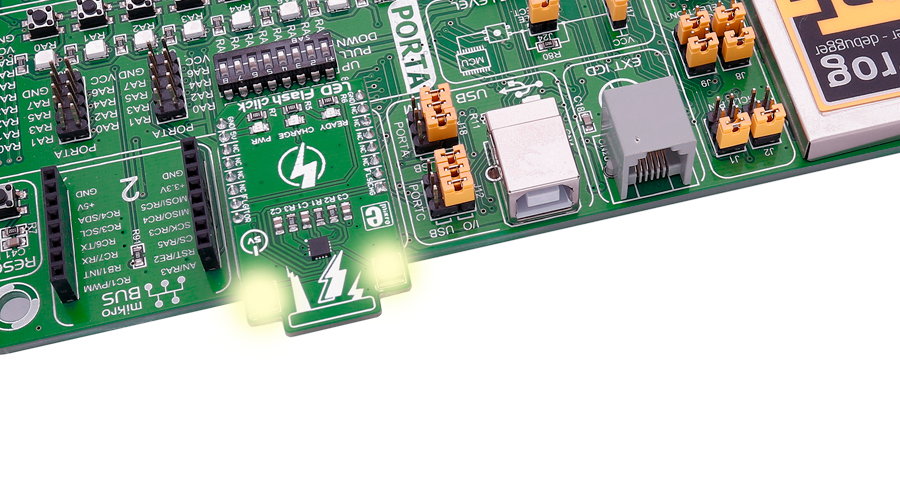The CAT3224 is a very high-current integrated flash LED driver which also supports the charging function for a dual-cell supercapacitor applications. Ideal for Li-ion battery-powered systems, it delivers up to 4A LED flash pulses, far beyond the peak current capability of the battery.
Dual-mode 1x/2x charge pump charges the stacked supercapacitor to a nominal voltage of 5.4 V, while an active balance control circuit ensures that both capacitor cell voltages remain matched.
The driver also features two matched current sources. External resistors provide the adjustment for the maximum flash mode current (up to 4 A) and the torch mode current (up to 400 mA). A built-in safety timer automatically terminates the flash pulse beyond a maximum duration of 300 ms.
The CAT3224 has a shutdown mode that is so low that ON Semiconductor can safely call it "zero" mode. In this mode, it typically uses only 1µA.
On the LED Flash click there are three different LED indicators, here is how they operate:
CHARGE — When this LED is on the driver is in charge mode.
READY — When this LED is on it indicates that the supercapacitor is fully charged.
PWR — Indicates if power is present.
FLAG is an active-low open-drain output that notifies the microcontroller that the supercapacitor is fully charged by pulling the output low (pin 15 in the mikroBUS). When using FLAG, this pin should be connected to a positive rail via an external pull-up resistor.
TORCH is the torch mode enable pin. When high, the LED current sources are enabled in torch mode.
FLASH is the flash mode enable pin. When high, the LED current sources are enabled in flash mode. If FLASH is kept high for longer than 300 ms typical, the LED channels are automatically disabled.
LEDA, LEDB are connected internally to the current sources and must be connected to the LED anodes. Each output is independently current regulated. These pins enter a high-impedance ‘zero’ current state whenever the device is placed in shutdown mode or FLASH and TORCH are low.









